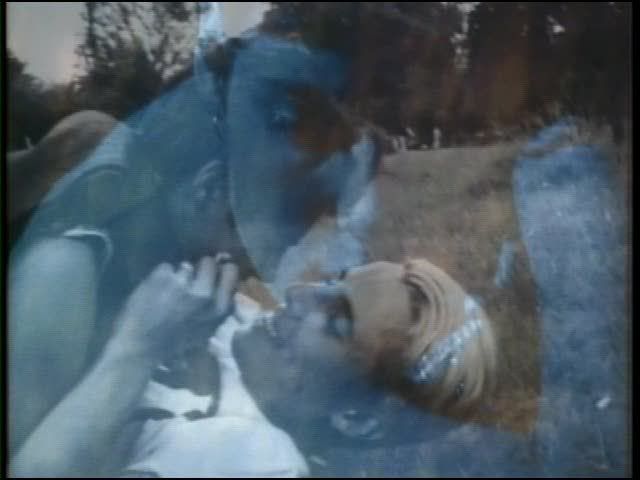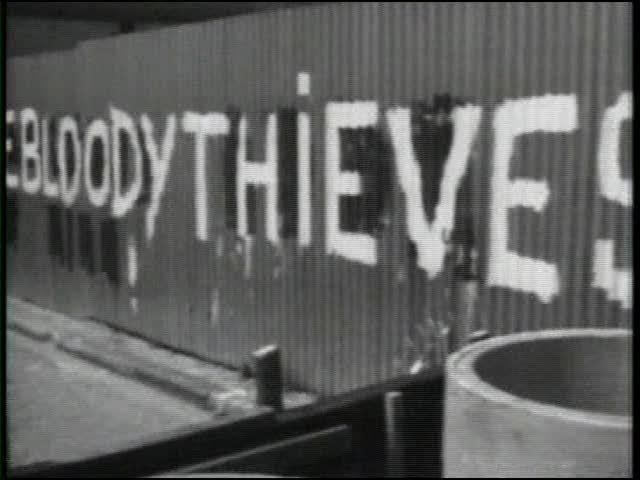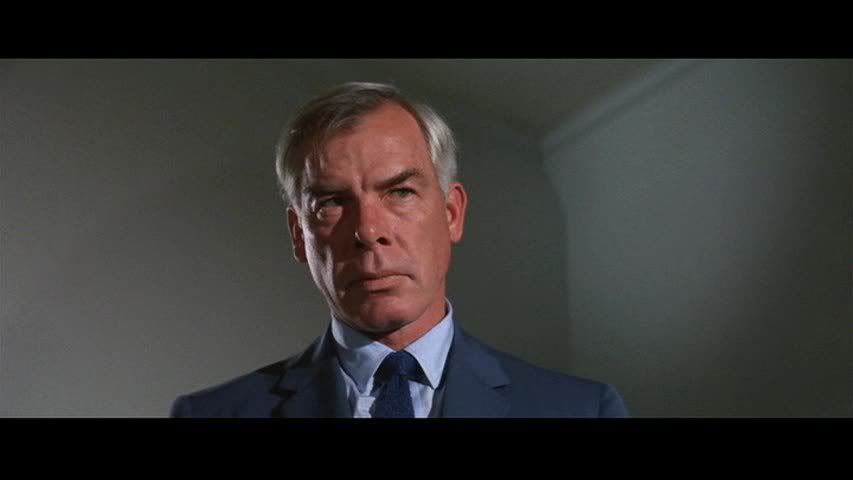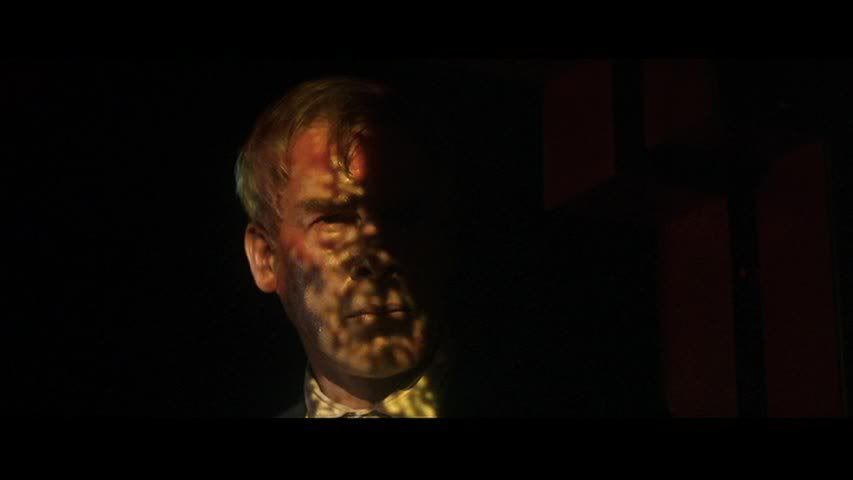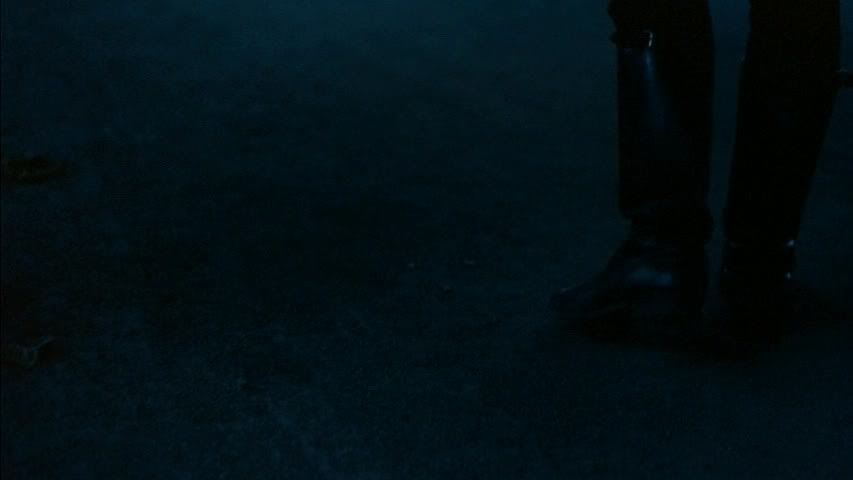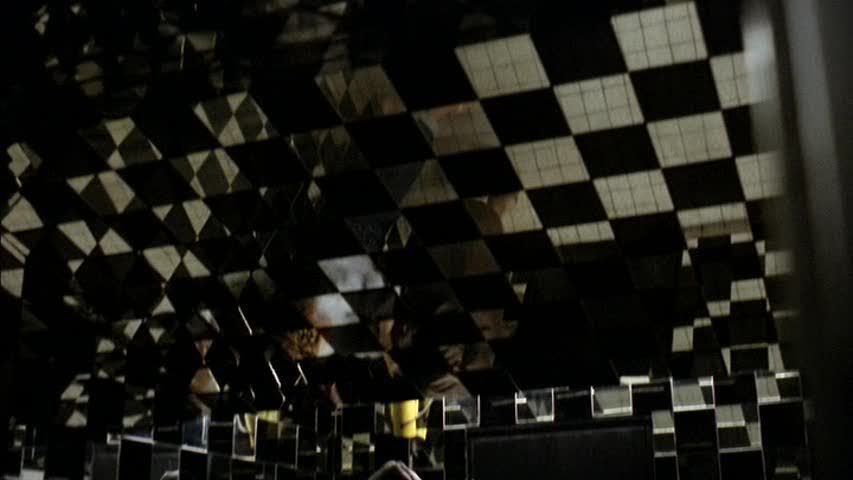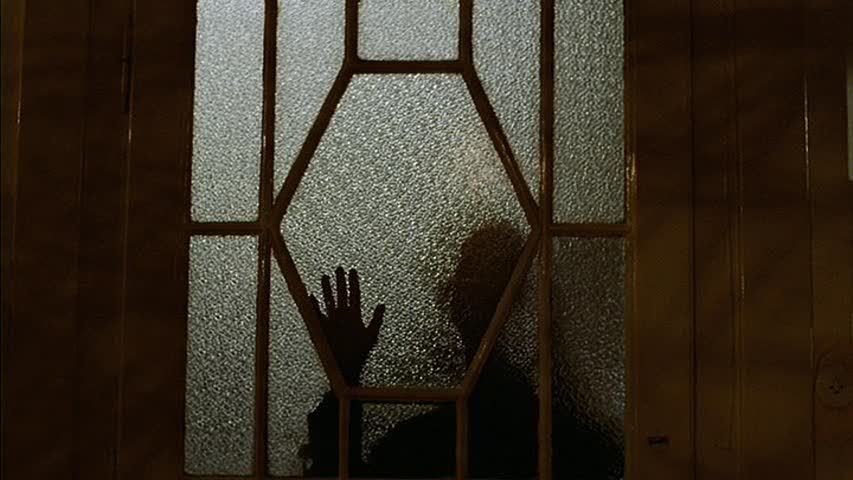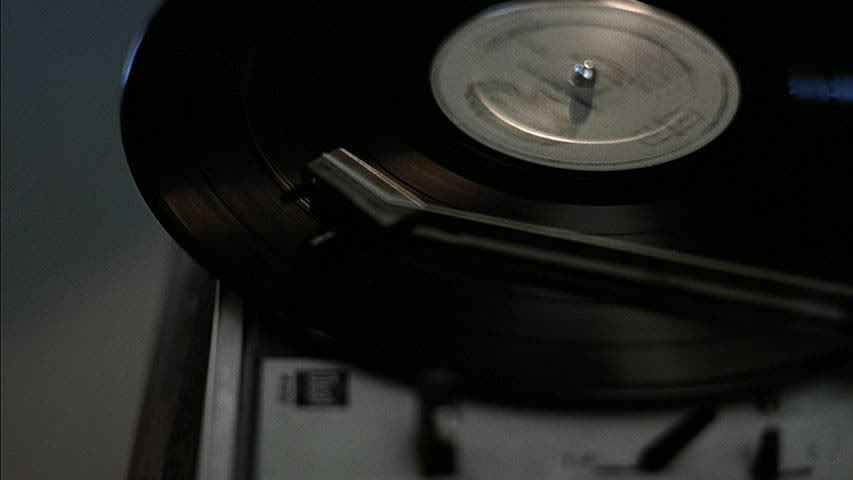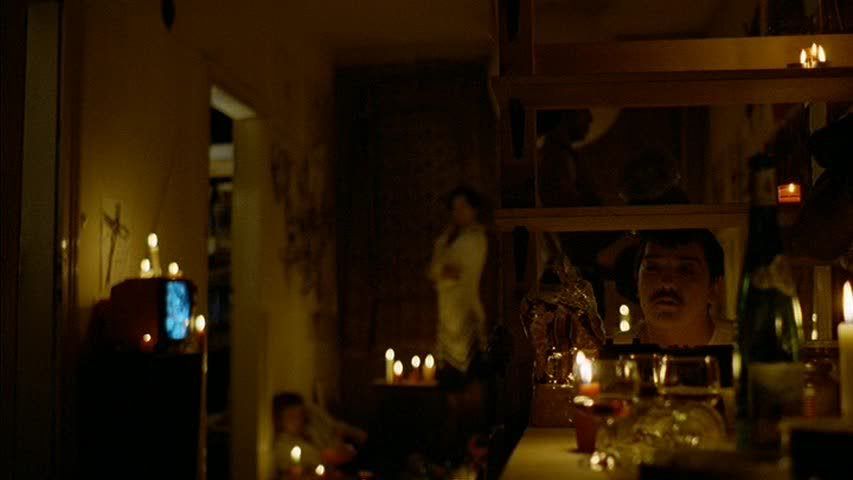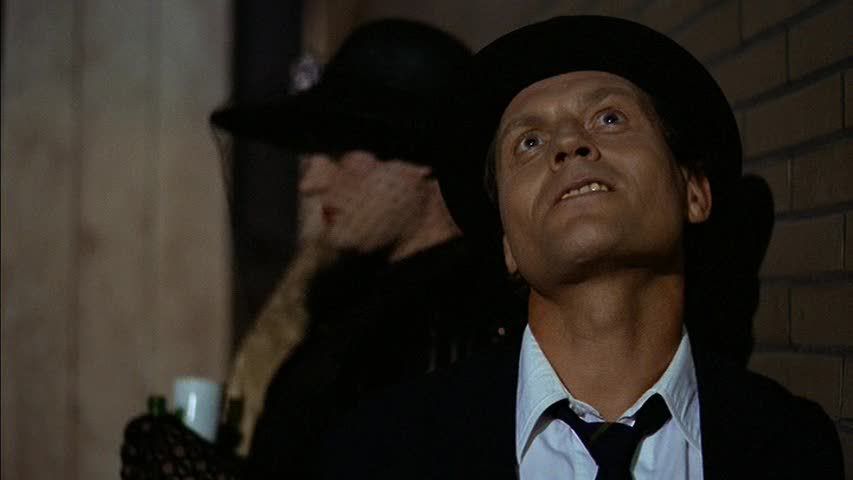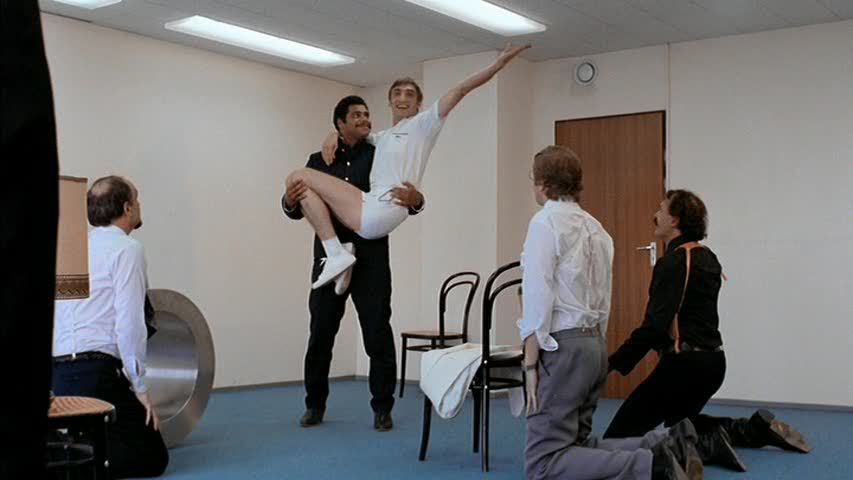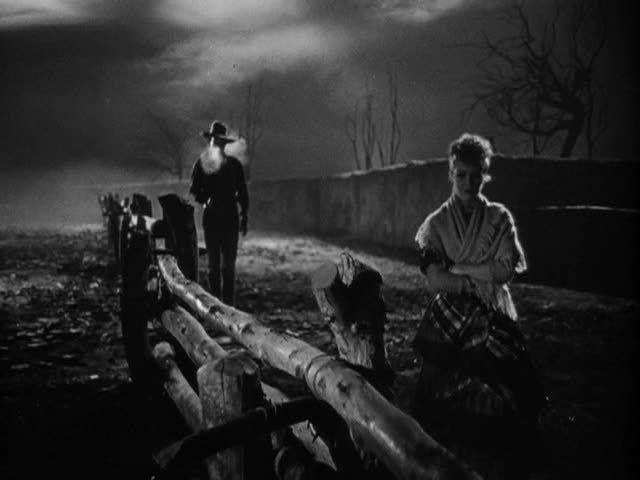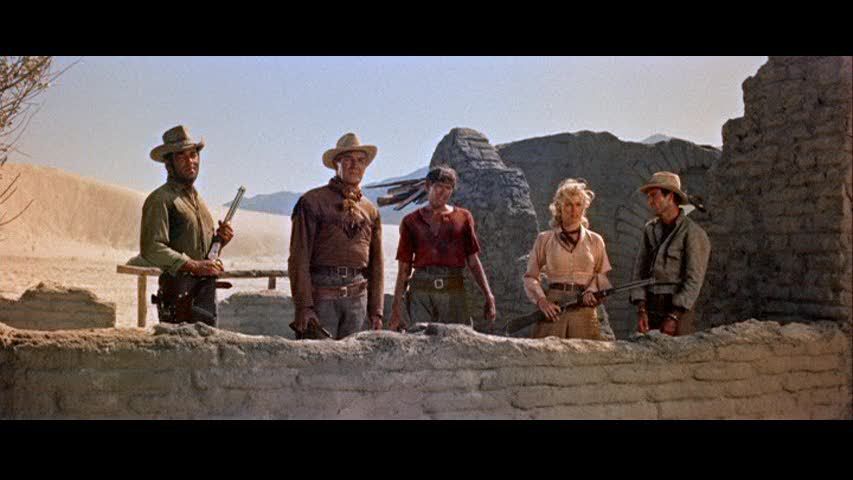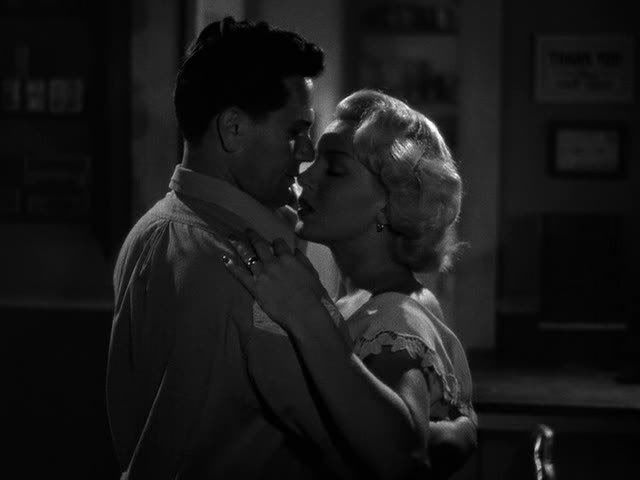
Tay Garnett's The Postman Always Rings Twice, adapted from the James M. Cain novel of the same name, is film noir boiled down to its rawest essence. Its plot is frankly preposterous, twisty and packed with one absurd contrivance after another, and yet there's something strangely irresistible about this odd, emotionally draining roller coaster ride. This is a noir where everything is increasingly centered around the passionate, complex, love/hate relationship between the femme fatale and the tough-luck guy who's stuck on her, a relationship whose seismic, molten intensity eventually burns away all the distractions at the film's margins, leaving only the smoldering exchange of glances, the continuous tension between a kiss and a slap, the desperate violence and desire of two people whose destinies are inextricably intertwined.
The femme in this variation on an age-old tale is Cora (Lana Turner), the wife of lunch counter owner Nick Smith (Cecil Kellaway), a much older man. The hapless guy who falls for this beauty is the wandering drifter Frank Chambers (John Garfield), a shiftless guy who hitchhikes from town to town and job to job. One afternoon, he winds up at Nick's place, where he gets a gig pumping gas and tending to odd jobs around the diner. He takes the opportunity because he just so happens to be there, as is his way, but he sticks around because of Cora, blonde and beautiful and statuesque, so glamorous that she looks more than a little out of place playing the role of the owner's wife, working in the kitchen and puttering around the place as a homemaker. It's never quite clear why Cora ever married Nick in the first place, and her explanation that he just came along at the right time and offered her stability doesn't hold water. Cora's an unabashed social climber, it's true, seeking a good life for herself and not above using her sexual appeal to get it — but that would hardly explain why she'd settle for the schlubby, unambitious old Nick, a tightwad whose greatest happiness seems to be getting his laundry done for free. The problem is that Turner is never believable in this role, she's too much of a movie star to be able to get across the more practical, down-to-earth ambitions that Cora expresses, like turning the diner into a fashionable bar.
Turner might inhabit this role awkwardly, but she's nevertheless an electric embodiment of the femme fatale, and her chemistry with the equally potent Garfield is undeniable. Together, they're the archetypal noir couple, her the ambitious social climber who'll toss her moral scruples aside to get what she wants, him the ordinary joe blinded by beauty, willing to do anything to get the girl. They're locked together almost from the very moment they lay eyes on each other. Cora's introduction in particular is stunning, with Garnett's camera and Frank's eyes catching a glimpse of her bare legs first as her dropped lipstick tube rolls across the floor; the camera then slowly traces upwards to take in the glorious rest of her. Frank bends down to pick up her lipstick, then initiates the first of the power games between them. While Cora waits for him to walk over with the lipstick to return it to her, he simply lounges against the lunch counter, holding it out in his palm, forcing her to come to him instead. It's an encapsulation of their entire relationship-to-come in a simple set of stylized gestures and motions, the webs of power and control already starting to form between them.
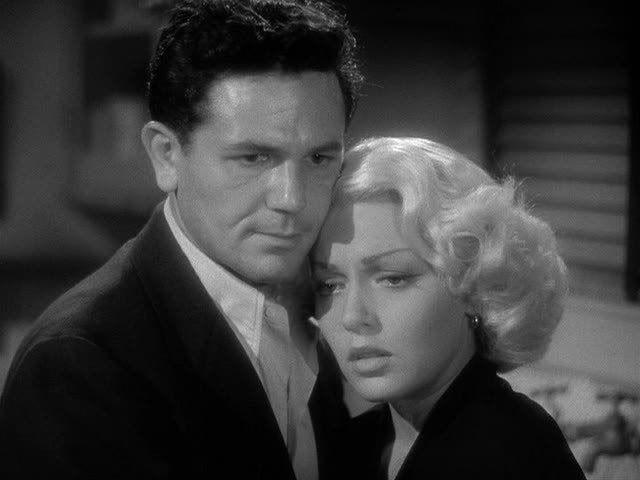
If the complicated relationship between Frank and Cora is continually enthralling, the actual plot with its multiple murder intrigues, courtroom double-crosses and conflicting schemes, is not quite as satisfying. There are too many coincidences and obvious contrivances, too many ridiculous situations — like the absurd sequence of events that confounds Cora and Frank's first failed attempt at murdering Nick. The script is sometimes smart enough to play the most outrageous bits for humor, particularly in the recurring scenes featuring a dim-witted motorcycle cop who fixates obsessively on a dead cat at the scene of the crime. But there's too much unexplained or poorly motivated business going on all the time. Why is the local district attorney (Leon Ames) so immediately suspicious of Frank and Cora, when it would seem that Nick was only involved in a bizarre accident? Who took out the insurance policy on Nick right before the couple finally manages to kill him? And all the courtroom shenanigans are unnecessarily convoluted and silly, not to mention distractingly unrealistic. The best noirs are always hyper-real and stylized rather than realistic, but this film makes such a hash of its narrative that it has no grounding in reality whatsoever. Still, even at its worst moments, the film boasts lively supporting turns from Hume Cronyn as a sleazy defense lawyer and Alan Reed as his beefy, wise-guy private eye, keeping the film fun through its sometimes uneven middle stretches.
For the most part, though, the film's best aspect is its central dysfunctional relationship. In the final half hour of the film, especially, this relationship becomes very complex, as Frank and Cora develop an intense hatred and distrust for one another, while at the same time clinging desperately together. They share the guilt for Nick's death, and for betraying one another, and yet the initial sparks of their love still glow, reminders of what brought them together in the first place. The performances of Turner and Garfield are perfect, even when they don't quite fit the characters they're supposed to be playing — they're perfect if only because of the friction and energy they generate whenever they're together. Garnett's sense of mise en scène also envelops the doomed lovers in their joined destinies, using moody lighting schemes to turn Nick's diner into a shadowy and tightly confined noir locale, its rooms seemingly never big enough and its door opening at awkward angles. Even when the plot threatens to go off the rails, the film's theme of desire shading into scorn is communicated in every nuance of Turner and Garfield's volcanic performances, and in the increasingly claustrophobic, constricting interiors with which Garnett surrounds them. The Postman Always Rings Twice may be implausible and overdone and occasionally silly, but it's also one of the best and purest explorations of the complicated sexual dynamics of the film noir, the relationships between sex and power, sex and greed, sex and guilt that drive noir's anti-heroes and femme fatales.


